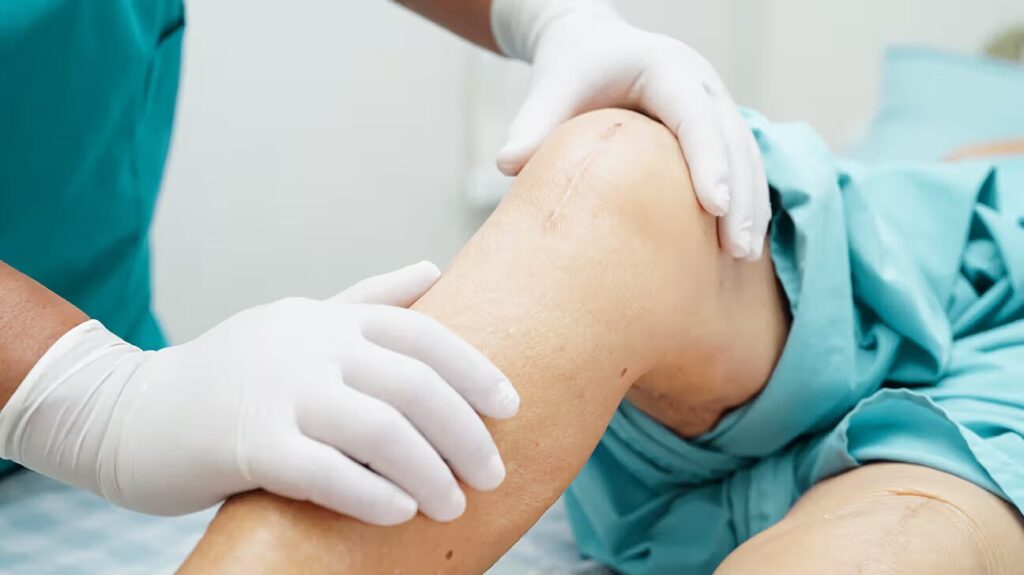
Knee replacement surgery is a life-changing procedure that relieves chronic pain and improves mobility. However, some patients experience unexpected discomfort in the form of sciatica pain after their surgery. This raises a crucial question: What is the connection between knee replacement surgery and sciatica, and how can it be managed effectively?
Why Does Sciatica Occur After Knee Replacement?
Sciatica is a condition characterized by pain that radiates along the sciatic nerve, which extends from the lower back through the hips and down each leg. While knee replacement surgery primarily focuses on addressing knee joint issues, several factors can contribute to the development or exacerbation of sciatica pain post-surgery:
- Nerve Compression or Irritation – The positioning during surgery, swelling, or post-operative inflammation can pressure the sciatic nerve, leading to pain and discomfort.
- Changes in Gait and Posture—Patients may alter their walking patterns after knee replacement to accommodate the new joint. These changes can affect the lower back and hip alignment, leading to sciatic nerve irritation.
- Pre-existing Spine or Nerve Issues – Some patients may have undiagnosed spinal conditions, such as herniated discs or spinal stenosis, that become more apparent after surgery due to shifts in biomechanics.
- Muscle Tightness and Weakness – Surgery can lead to muscle imbalances, particularly in the hip and lower back, which may contribute to sciatic pain.
Symptoms of Sciatica Post-Knee Replacement
If you’ve recently had knee replacement surgery and are experiencing any of the following symptoms, you may be dealing with post-surgical sciatica:
- Sharp, burning, or shooting pain down the leg
- Numbness or tingling in the lower back, buttocks, or leg
- Weakness in the affected leg
- Increased pain when sitting, standing, or walking for extended periods
How to Alleviate Sciatica Pain After Knee Replacement
While sciatica pain can be frustrating, several treatment strategies can help manage and reduce discomfort:
- Physical Therapy
A structured physical therapy program can help restore mobility, strengthen supporting muscles, and improve posture to relieve pressure on the sciatic nerve.
- Stretching and Exercises
Gentle stretches targeting the lower back, hips, and hamstrings can help alleviate tension on the sciatic nerve. Some beneficial exercises include:
- Seated or standing hamstring stretches
- Piriformis stretches
- Core-strengthening exercises
- Pain Management Techniques
Over-the-counter pain relievers (ibuprofen or acetaminophen) may help control inflammation. In some cases, a physician may recommend prescription medications or steroid injections.
- Postural Adjustments and Ergonomics
Pay attention to posture while sitting, standing, and walking. Avoid prolonged sitting and use supportive chairs with lumbar support.
- Massage Therapy and Heat/Ice Application
Massaging the lower back and gluteal muscles can help relieve tension, while heat and ice therapy can reduce inflammation and relieve temporary pain.
- Chiropractic Care or Acupuncture
Some patients find relief through chiropractic adjustments or acupuncture, which can help reduce nerve compression and improve overall alignment.
When to Seek Medical Attention
If sciatica pain persists, worsens, or is accompanied by symptoms such as loss of bladder or bowel control, immediate medical attention is necessary. A healthcare provider can assess the condition in severe cases and recommend further interventions, such as imaging tests or surgical options.
Final Thoughts
Experiencing sciatica pain after knee replacement surgery can be an unexpected challenge, but understanding the underlying causes and implementing appropriate treatments can lead to significant relief. By working closely with healthcare professionals and adopting a comprehensive pain management approach, patients can enhance their recovery and return to a pain-free lifestyle.




